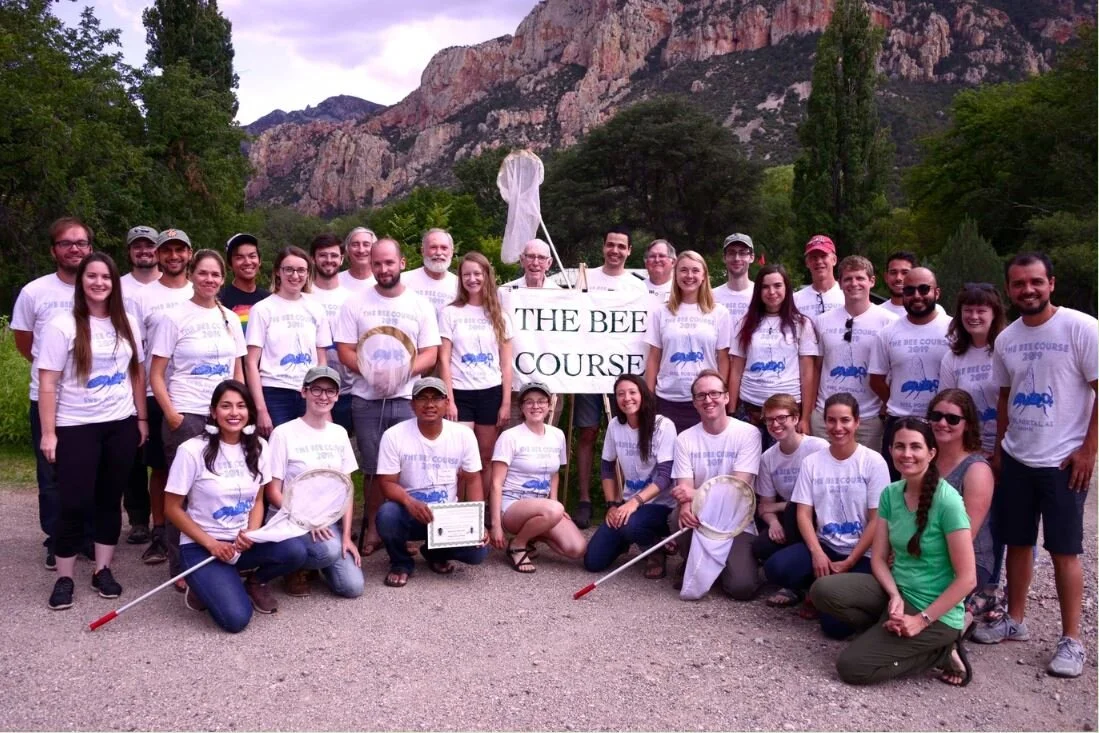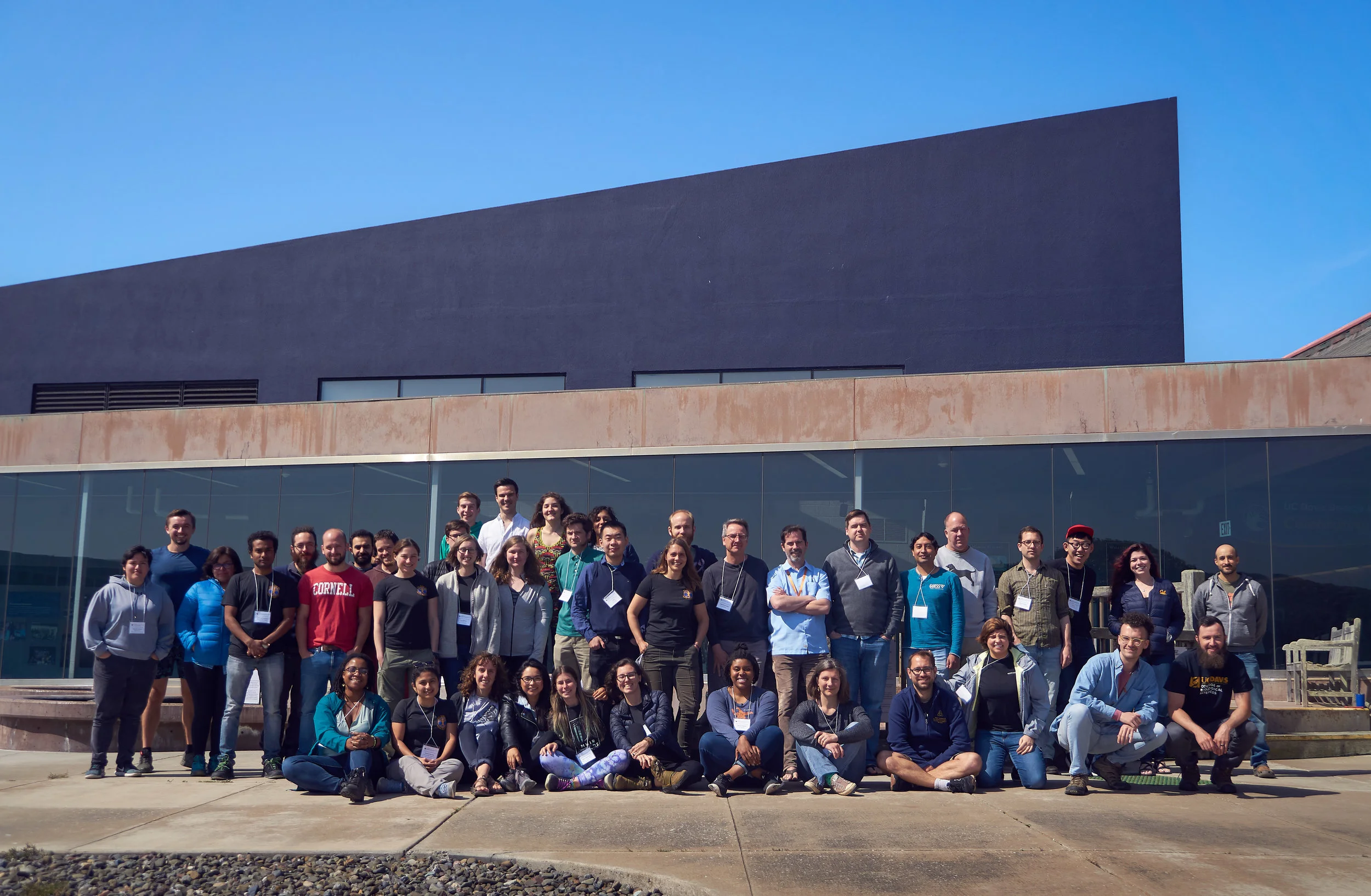September 22 - September 25 2019 — Collection visit at the Oberösterreichisches Landesmuseum in Linz
Elizabeth and I went to Linz, Austria, to investigate some crucial type specimens that are housed in the vast insect collection of the Museum in Linz. The Linz collection is certainly among the best insect collections in Europe and the sheer amount of old and recent material is just incredible. This place is really worth a visit. Thanks to Martin Schwarz for hosting us!
August 13 - August 28 2019 — Beecourse at the Southwestern Research Station in Portal, AZ
Five year after I participated in the beecourse as a student, I went back to Portal, Arizona to collect and identify bees. It is just such a great place to be. Thanks to all the participating students and instructors. It was a wonderful time.
May 22 - June 3 2019 — California Department of Food and Agriculture (CDFA) and Bodega Bay Workshop
Last month I was lucky to combine my trip to the Bodega Bay Workshop with a visit of my colleague and friend Martin Hauser at the California Department of Food and Agriculture in Sacramento. Martin is an amazing host and I had two great days sorting through Malaise trap material collected all over the world by him and his colleagues. It’s a real treasure chest. I found some really cool looking Nomiinae from Cambodia and another species that I was looking for for nearly two years — Mellitidia tomentifera, from northern Queensland! I’ll make sure to take some pictures soon. Martin mostly works on flies, but he is pretty good at collecting other stuff as well …
After my trip to the CDFA I drove over to Davis to participate in the 2019 Bodega Bay Workshop in Applied Phylogenetics, hosted at the UC Davis Marine Lab in Bodega. Great instructors, great sessions, great content. The workshop focuses heavily on RevBayes these days, which is a computational environment for all sorts of phylogenetic objectives, for example model testing, inference, divergence times estimates, lineage diversification, etc. Everyone agrees that the learning curve is steep—but it is quite rewarding when something finally runs and you feel that you start to understand the modularity of the environment! And lastly, the landscape is amazing as well
Last day of the workshop with all participants and instructors.
August 2018 - August 2020 — Smithsonian National Museum of Natural History
I was fortunate to land a pre-doctoral fellowship appointment in the Entomology Department of the Smithsonian National Museum of Natural History in DC. The museum has one of the largest natural history collections in the world and just the Entomology Department houses over 35.000.000 specimens of all sorts of insects, including thousands and thousands of types.
My project focuses on past diversification dynamics of solitary bees and I am supervised by Seán Brady.
May 21-24 2018 — Visiting the collection of the AMNH
The American Museum of Natural History (AMNH) has an outstandingly well-curated collection of bees. I was hosted by Jerry G. Rozen and his assistant Corey Smith and I was able to study the parasitic Apidae and nomiine bees of the collection. 2 1/2 days were certainly not enough!
Below is a photo of a drawer of Euherbstia excellens, including excavated nests (on the right). Euherbstia is monotypic genus, i.e., it only contains a single described species. I’ll take some pictures of the bee in the future, so stay tuned!
May 13-24 2018 — Back in Utah … On the search for Pseudomasaris!
After catching up with our collaborators at Utah State University (Logan), Elizabeth and I spent half a week searching for specimens of the pollen wasp Pseudomasaris. Like bees, these wasps collect pollen instead of Arthropod prey to provision the brood cells of their young. We finally succeeded at a location near the Red Butte Garden and Arboretum in Salt Lake City! We had almost given up …
July 16-21 2017 — The second Entomological Collections Management Workshop
I was delighted to be one of 25 participants of the second ECN management workshop, held at the Milwaukee Public Museum (MPM) in Wisconsin. It was such a blast! Almost one week of managing, moving, and appreciating entomological collections, including professional storage, processing, permitting, and much more. We did the ultimate specimen package & shipping test by throwing our post boxes from the roof of the MPM (5 stories?) and almost all of the specimens survived intact!
Tossing the shipping boxes from the roof!
We also enjoyed a trip to the beautiful Field Museum of Natural History in Chicago (FMNH).
Many, many thanks to the instructors of the workshop, Floyd Shockley (Smithsonian National Museum of Natural History), David Furth (Furth Museum Consulting), Jennifer Zaspel (MPM), and Crystal Maier (FMNH). You did such an awesome job! Also thanks to Michael Orr for pointing me to the workshop application.
May 23-26 2017 — NYS DEC Bee identification workshop, Huyck Preserve
The Danforth lab organized a pollinator identification workshop together with the New York State Department of Environmental Conservation. This was a first step torwards a state-wide survey of native bees of NYS.
Collecting at the Albany Pine Bush Preserve. Photo by Maria van Dyke.
With a total of 15 students, we enjoyed four days of bee collecting and identification at the Huyck Preserve in Rensselaerville, NY. Thanks to Amanda Dillon from the Albany Pine Bush Preserve commission, we could even go for a collecting trip to the sandy soils of the Albany Pine Bush Preserve. We found some really cool and rare bees! Among them was Andrena cornelli, a pollen specialist on Azalea (collected on Rhododendron prinophyllum), and a founding female of the beautiful Bombus borealis. Great thanks goes to Erin White and Matthew Schlesinger for co-organizing the workshop!
A female of Bombus borealis, also known as the Northern Amber Bumble Bee. The yellow colored hairbands on the abdomen are darkened, best visible in dorsal view.
August 2016 — Visiting the USU collection / Logan Bee Lab at the Utah State University Campus in Logan, UT
Last August, my colleague Elizabeth A. Murray and I delved into the collections housed at the Utah State University: The Utah State University Insect Collection, lead by James Pitts, and the U.S.D.A. Bee Biology and Systematics Laboratory. Check out more details on Elizabeth's website! It's safe to say: It was a tough job.
Studying hard!










